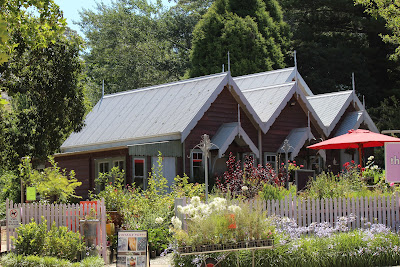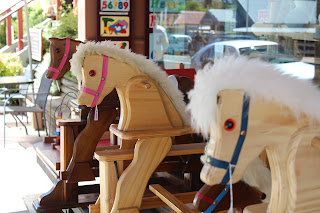This of course, this isn’t what made Eden unique as whaling
took place all over Australia’s coastline, including close to my home region at
Byron Bay. One could suggest its uniqueness could have been attributed to a
bizarre ‘cure’ for rheumatic fever performed here in the 1890’s. A large hole
would be cut into a whales body and patients, nude, would sit inside with only
their heads poking out. They would
snuggle down for a good hour or more with the temperature of the dead creature
rising to 40°celsius. It was noted however,
the after effects of the treatment were that patients gave off a ‘horrible dead
odour for a week or two’... but no it wasn’t this peculiar medical procedure
that made Eden unique (or put it on the list for me), it was because of Old Tom
and his mates. 

Old Tom was an Orca; a magnificent Killer Whale that gave
true meaning to the adage “with friends
like these, who needs enemies”. For
he and his pack had made a partnership with the Whalers. When the Humpbacks or Southern Rights or the Blue
or for that matter any of the other Baleen
type whales came through, Old Tom’s pack would ‘round up’ a whale and ‘hold it’
whilst Old Tom notified the whalers to come. He would swim to bay, splash and
leap until the whalers boat launched, then lead them to the ‘caught’
whale. When the whalers harpooned the
whale, Old Tom would get so excited sometimes he would grab the harpoon line in
his mouth to slow the whale down, exhausting it more thus enabling the whalers
to lance it to death. As reward for working with the whalers, Old Tom and his
pack received the killed whale’s tongue and lips. After their ‘payment’, Old Tom and his mates
would then go in search for another suitable whale for their ‘partners’.

It’s believe that this did not happen anywhere else in the world. This ‘partnership’ between the whaleman and Old Tom was so unique and unusual, that when Old Tom died in 1930, not a single Orca returned to Eden and the whaling industry of Eden came to an end. The skeleton of Old Tom holds court in the Killer Whale Museum, and it was to see this ‘wolf of the sea’ that enticed me to Eden.

It’s believe that this did not happen anywhere else in the world. This ‘partnership’ between the whaleman and Old Tom was so unique and unusual, that when Old Tom died in 1930, not a single Orca returned to Eden and the whaling industry of Eden came to an end. The skeleton of Old Tom holds court in the Killer Whale Museum, and it was to see this ‘wolf of the sea’ that enticed me to Eden.
The surrounds of Eden are indeed a paradise; the most
beautiful bays, spectacular wilderness and Lake Curalo is breathtaking. Unfortunately, I was to find the actual
township of Eden very lacking. The
township, first settled way back in 1820’s has gone under many changes and
industries over the years, from whaling to timber to fish cannery to now
tourism. And along with the decline to
industry so too did the aesthetics of the town change and decline.
There are very few historical buildings left standing in the centre of the town, most of the shops are of those ugly 1970’s type, basic square brick with big windows. It obvious the local historical society is trying to regain some of the town’s heritage as many of the shops have plaques attached to them saying “The site of....” but this a poor substitute for a beautiful building. There were some historical buildings, but they were far and few in-between and hunting them out took considerable effort.
Not so hunting out the delicious fare of the Disaster Bay Chillies.
Big M was in his element when we found these gourmet condiments and a phone call to Stuart at the ‘processing’ plant resulted in an invite to visit – they were cooking and we were welcome to come and try. It’s not a very big production, but it certainly packed a punch! The smell was divine and Big M had much fun ‘taste-testing’. With arms bearing jars of delicious condiments and Chilli Wine, made from nine different chillies and not a single drop of grape in sight... we headed off for the next gourmet stop – Bega, home of cheese.
There are very few historical buildings left standing in the centre of the town, most of the shops are of those ugly 1970’s type, basic square brick with big windows. It obvious the local historical society is trying to regain some of the town’s heritage as many of the shops have plaques attached to them saying “The site of....” but this a poor substitute for a beautiful building. There were some historical buildings, but they were far and few in-between and hunting them out took considerable effort.

Not so hunting out the delicious fare of the Disaster Bay Chillies.
Big M was in his element when we found these gourmet condiments and a phone call to Stuart at the ‘processing’ plant resulted in an invite to visit – they were cooking and we were welcome to come and try. It’s not a very big production, but it certainly packed a punch! The smell was divine and Big M had much fun ‘taste-testing’. With arms bearing jars of delicious condiments and Chilli Wine, made from nine different chillies and not a single drop of grape in sight... we headed off for the next gourmet stop – Bega, home of cheese.
Where Eden lacked street appeal, Bega surpassed and
delighted. Bega’s township is abundant
with historical and country style buildings and houses all set in a beautiful
valley with rolling hills. In fact it’s
said that the ‘most smug-looking cows
live there’ and judging by the beauty and tranquillity of their farming
area, I can see why. We dropped into the
Bega Cheese Heritage Centre for something to eat and perhaps taste-test and
although I’m sure during non-high-season times, this place would be a delight,
the crowds, the grottiness of the café sitting area and the lack-lustre service
put a dampener on our visit to this charming little town. With so many ‘little fingers’ grubbing about
in the testing cheese display, we weren’t game to go anywhere near the samples.
We did not entirely
miss out on our feast of cheese, for just sixty kilometres up the road was the
Tilba Cheese factory and the boutique South Coast Cheese company both located
in the divine village that time forgot – Central Tilba. Set in picturesque hill soundings, every
building is beautifully restored, their fronts brimming with flowering gardens
that entice colourful parrots and small birds right into the main street.
The quirkiest signage adorns to the walls of the shops, such as the local pub offering “Husband Day Care”, or the shop that advertises it’s opening hours as “Most days about 9 or 10, occasionally as early as 7, but some days as late as 12 or 1. Closed: about 5 or 6, but sometimes as late as 11 or 1 and somedays we arn’t here at all....” and I just loved the colourful prayer wheel inviting one to turn it and mumble the Aussie mantra of “She’ll be right” instead of om mani padme hum.
The quirkiest signage adorns to the walls of the shops, such as the local pub offering “Husband Day Care”, or the shop that advertises it’s opening hours as “Most days about 9 or 10, occasionally as early as 7, but some days as late as 12 or 1. Closed: about 5 or 6, but sometimes as late as 11 or 1 and somedays we arn’t here at all....” and I just loved the colourful prayer wheel inviting one to turn it and mumble the Aussie mantra of “She’ll be right” instead of om mani padme hum.
As we arrived at Norwa we debated our last place to visit. We were close to the Southern Highlands where we first started our ‘one day’ road trip and time had come to an end. Work was calling it was time to get back. Looking at the map, Big M thought it’d be a good thing to head straight up the highway to Sydney but I was adamant that the trip wasn’t about to end that abruptly, no there was another place I wanted to see, to finish off with, but Big M wasn’t too keen.

Climbing the curves of the Highland mountains took us back
into beautiful pockets of rainforest and we were blessed with two sightings of
lyre birds – one with tail in full plumage. The village of Kangaroo Valley is
another picture perfect darling and one that induces a plethora of oohs and
arhs. Once again, quaint colonial buildings
surrounded by a stunning forest
landscape.
Gardens filled with flowers and abundant birdlife contour the main street. A street filled with art galleries, home-made fudge emporiums, sumptuous cafes and adorable cottage-style B&B’s. The pride of Kangaroo Valley is the magnificent Hampden Bridge. A sandstone suspension bridge with four battlement turrets that would look more at home in a castle than in a tiny 300population village, yet it looks fabulous sitting astride the beautiful stone lined river surrounded by rugged forest. Medieval in character, it wasn’t hard to imagine the clip of hooves that crossed in year gone by.
It was the perfect ending to our fabulous trip of tiny Aussie towns, towns diverted from the main highways and hidden from the everyday. Gorgeous towns fighting for remembrance and to stay alive. Although I’ve ticked off some of the ‘one day’ list, another has formed - the ‘I’m going to return to....’ list, and its getting quite long.
Gardens filled with flowers and abundant birdlife contour the main street. A street filled with art galleries, home-made fudge emporiums, sumptuous cafes and adorable cottage-style B&B’s. The pride of Kangaroo Valley is the magnificent Hampden Bridge. A sandstone suspension bridge with four battlement turrets that would look more at home in a castle than in a tiny 300population village, yet it looks fabulous sitting astride the beautiful stone lined river surrounded by rugged forest. Medieval in character, it wasn’t hard to imagine the clip of hooves that crossed in year gone by.
It was the perfect ending to our fabulous trip of tiny Aussie towns, towns diverted from the main highways and hidden from the everyday. Gorgeous towns fighting for remembrance and to stay alive. Although I’ve ticked off some of the ‘one day’ list, another has formed - the ‘I’m going to return to....’ list, and its getting quite long.














































